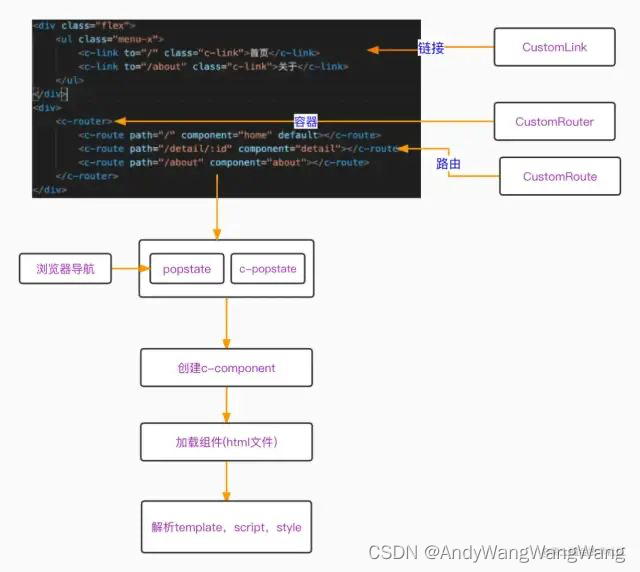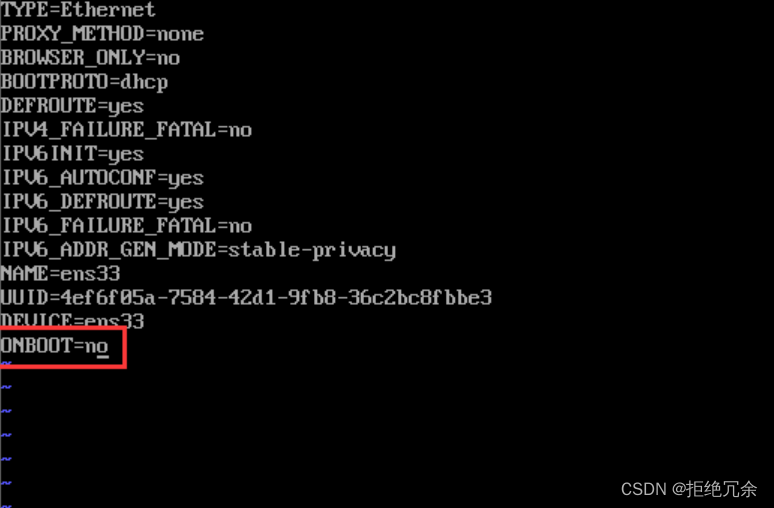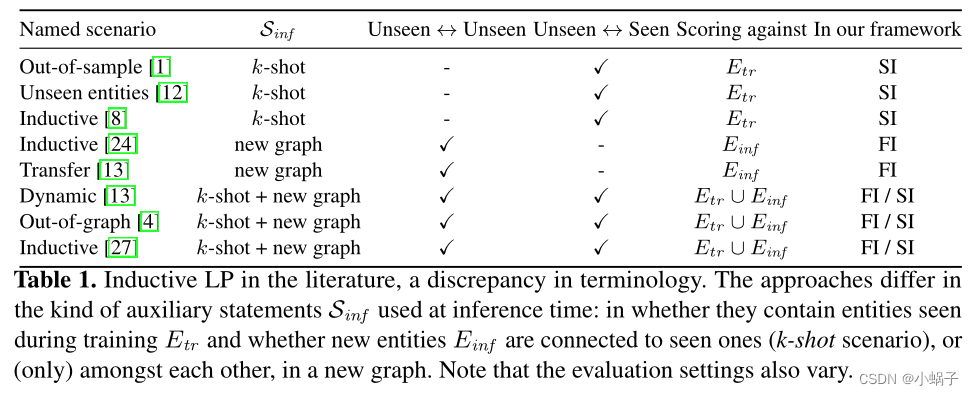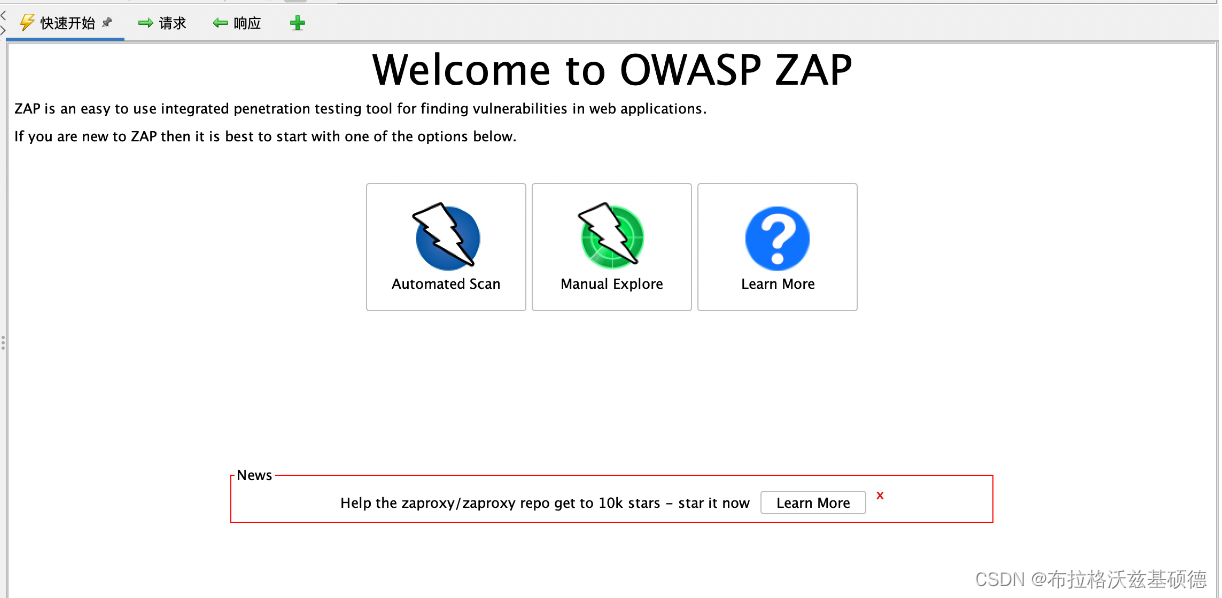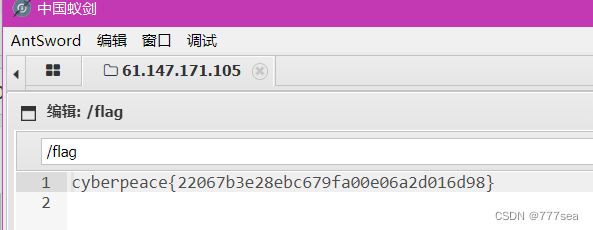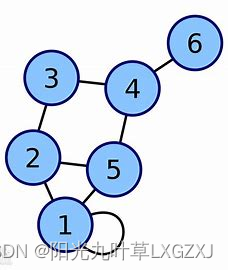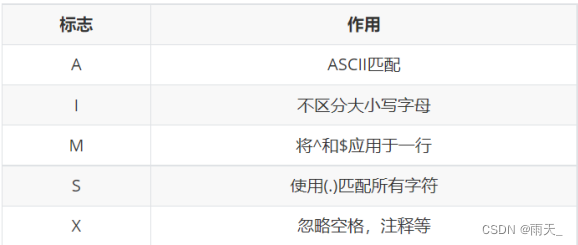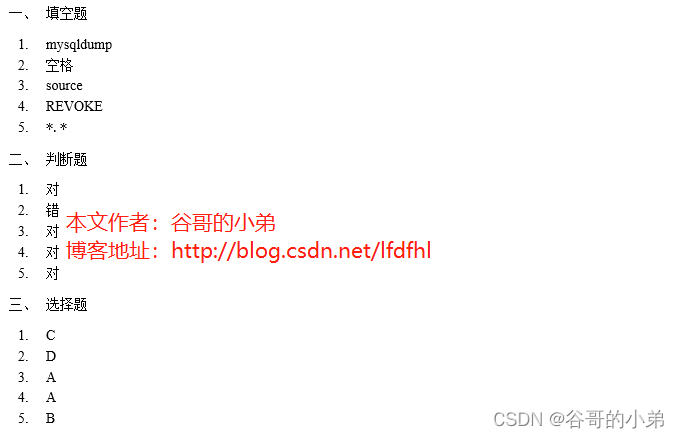一 准备工作
1 新建模块ssm com.atguigu.ssm
2 导入依赖
<packaging>war</packaging>
<properties>
<spring.version>5.3.1</spring.version>
</properties>
<dependencies>
<dependency>
<groupId>org.springframework</groupId>
<artifactId>spring-context</artifactId>
<version>${spring.version}</version>
</dependency>
<dependency>
<groupId>org.springframework</groupId>
<artifactId>spring-beans</artifactId>
<version>${spring.version}</version>
</dependency>
<!--springmvc-->
<dependency>
<groupId>org.springframework</groupId>
<artifactId>spring-web</artifactId>
<version>${spring.version}</version>
</dependency>
<dependency>
<groupId>org.springframework</groupId>
<artifactId>spring-webmvc</artifactId>
<version>${spring.version}</version>
</dependency>
<dependency>
<groupId>org.springframework</groupId>
<artifactId>spring-jdbc</artifactId>
<version>${spring.version}</version>
</dependency>
<dependency>
<groupId>org.springframework</groupId>
<artifactId>spring-aspects</artifactId>
<version>${spring.version}</version>
</dependency>
<dependency>
<groupId>org.springframework</groupId>
<artifactId>spring-test</artifactId>
<version>${spring.version}</version>
</dependency>
<!-- Mybatis核心 -->
<dependency>
<groupId>org.mybatis</groupId>
<artifactId>mybatis</artifactId>
<version>3.5.7</version>
</dependency>
<!--mybatis和spring的整合包-->
<dependency>
<groupId>org.mybatis</groupId>
<artifactId>mybatis-spring</artifactId>
<version>2.0.6</version>
</dependency>
<!-- 连接池 -->
<dependency>
<groupId>com.alibaba</groupId>
<artifactId>druid</artifactId>
<version>1.0.9</version>
</dependency>
<!-- junit测试 -->
<dependency>
<groupId>junit</groupId>
<artifactId>junit</artifactId>
<version>4.12</version>
<scope>test</scope>
</dependency>
<!-- MySQL驱动 -->
<dependency>
<groupId>mysql</groupId>
<artifactId>mysql-connector-java</artifactId>
<version>8.0.16</version>
</dependency>
<!-- log4j日志 -->
<dependency>
<groupId>log4j</groupId>
<artifactId>log4j</artifactId>
<version>1.2.17</version>
</dependency>
<!-- https://mvnrepository.com/artifact/com.github.pagehelper/pagehelper -->
<dependency>
<groupId>com.github.pagehelper</groupId>
<artifactId>pagehelper</artifactId>
<version>5.2.0</version>
</dependency>
<!-- 日志 -->
<dependency>
<groupId>ch.qos.logback</groupId>
<artifactId>logback-classic</artifactId>
<version>1.2.3</version>
</dependency>
<!-- ServletAPI -->
<dependency>
<groupId>javax.servlet</groupId>
<artifactId>javax.servlet-api</artifactId>
<version>3.1.0</version>
<scope>provided</scope>
</dependency>
<dependency>
<groupId>com.fasterxml.jackson.core</groupId>
<artifactId>jackson-databind</artifactId>
<version>2.12.1</version>
</dependency>
<dependency>
<groupId>commons-fileupload</groupId>
<artifactId>commons-fileupload</artifactId>
<version>1.3.1</version>
</dependency>
<!-- Spring5和Thymeleaf整合包 -->
<dependency>
<groupId>org.thymeleaf</groupId>
<artifactId>thymeleaf-spring5</artifactId>
<version>3.0.12.RELEASE</version>
</dependency>
</dependencies>
3 . 转web

4 . 创建表


二 配置web.xml
<!--配置Spring的编码过滤器-->
<filter>
<filter-name>CharacterEncodingFilter</filter-name>
<filter-class>org.springframework.web.filter.CharacterEncodingFilter</filter-class>
<init-param>
<param-name>encoding</param-name>
<param-value>UTF-8</param-value>
</init-param>
<init-param>
<param-name>forceEncoding</param-name>
<param-value>true</param-value>
</init-param>
</filter>
<filter-mapping>
<filter-name>CharacterEncodingFilter</filter-name>
<url-pattern>/*</url-pattern>
</filter-mapping>
<!--配置处理请求方式的过滤器-->
<filter>
<filter-name>HiddenHttpMethodFilter</filter-name>
<filter-class>org.springframework.web.filter.HiddenHttpMethodFilter</filter-class>
</filter>
<filter-mapping>
<filter-name>HiddenHttpMethodFilter</filter-name>
<url-pattern>/*</url-pattern>
</filter-mapping>
<!--配置SpringMVC的前端控制器DispatcherServlet-->
<servlet>
<servlet-name>SpringMVC</servlet-name>
<servlet-class>org.springframework.web.servlet.DispatcherServlet</servlet-class>
<!--设置SpringMVC配置文件自定义的位置和名称-->
<init-param>
<param-name>contextConfigLocation</param-name>
<param-value>classpath:springmvc.xml</param-value>
</init-param>
<!--将DispatcherServlet的初始化时间提前到服务器启动时-->
<load-on-startup>1</load-on-startup>
</servlet>
<servlet-mapping>
<servlet-name>SpringMVC</servlet-name>
<url-pattern>/</url-pattern>
</servlet-mapping>
<!--配置Spring的监听器,在服务器启动时加载Spring的配置文件-->
<listener>
<listener-class>org.springframework.web.context.ContextLoaderListener</listener-class>
</listener>
<!--设置Spring配置文件自定义的位置和名称-->
<context-param>
<param-name>contextConfigLocation</param-name>
<param-value>classpath:spring.xml</param-value>
</context-param>
三 创建SpringMVC的配置文件并配置
springmvc.xml
<?xml version="1.0" encoding="UTF-8"?>
<beans xmlns="http://www.springframework.org/schema/beans"
xmlns:xsi="http://www.w3.org/2001/XMLSchema-instance"
xmlns:context="http://www.springframework.org/schema/context"
xmlns:mvc="http://www.springframework.org/schema/mvc"
xsi:schemaLocation="http://www.springframework.org/schema/beans http://www.springframework.org/schema/beans/spring-beans.xsd http://www.springframework.org/schema/context https://www.springframework.org/schema/context/spring-context.xsd http://www.springframework.org/schema/mvc https://www.springframework.org/schema/mvc/spring-mvc.xsd">
<!--扫描控制层组件-->
<context:component-scan base-package="com.atguigu.ssm.controller"></context:component-scan>
<!--配置视图解析器-->
<bean id="viewResolver" class="org.thymeleaf.spring5.view.ThymeleafViewResolver">
<property name="order" value="1"/>
<property name="characterEncoding" value="UTF-8"/>
<property name="templateEngine">
<bean class="org.thymeleaf.spring5.SpringTemplateEngine">
<property name="templateResolver">
<bean class="org.thymeleaf.spring5.templateresolver.SpringResourceTemplateResolver">
<!-- 视图前缀 -->
<property name="prefix" value="/WEB-INF/templates/"/>
<!-- 视图后缀 -->
<property name="suffix" value=".html"/>
<property name="templateMode" value="HTML5"/>
<property name="characterEncoding" value="UTF-8" />
</bean>
</property>
</bean>
</property>
</bean>
<!--配置默认的servlet处理静态资源-->
<mvc:default-servlet-handler />
<!--开启mvc的注解驱动-->
<mvc:annotation-driven />
<!--配置视图控制器-->
<mvc:view-controller path="/" view-name="index"></mvc:view-controller>
<!--配置文件上传解析器-->
<bean id="multipartResolver" class="org.springframework.web.multipart.commons.CommonsMultipartResolver"></bean>
</beans>spring.xml
<?xml version="1.0" encoding="UTF-8"?>
<beans xmlns="http://www.springframework.org/schema/beans"
xmlns:xsi="http://www.w3.org/2001/XMLSchema-instance"
xsi:schemaLocation="http://www.springframework.org/schema/beans http://www.springframework.org/schema/beans/spring-beans.xsd">
</beans>四 .创建控制层EmployeeController
package com.atguigu.ssm.controller;
/**
* 查询所有的员工信息-->/employee-->get
* 查询员工的分页信息-->/employee/page/1-->get
* 根据id查询员工信息-->/employee/1-->get
* 跳转到添加页面-->/to/add-->get
* 添加员工信息-->/employee-->post
* 修改员工信息-->/employee-->put
* 删除员工信息-->/employee/1-->delete
*/
@Controller
public class EmployeeController {
}
五 index.html
<!DOCTYPE html>
<html lang="en" xmlns:th="http://www.thymeleaf.org">
<head>
<meta charset="UTF-8">
<title>首页</title>
</head>
<body>
<h1>index.html</h1>
</body>
</html>六 测试

七 创建service
1 创建service接口EmployeeService
package com.atguigu.ssm.service;
public interface EmployeeService {
}
2 创建service实现类EmployeeServiceImpl
package com.atguigu.ssm.service.impl;
import com.atguigu.ssm.service.EmployeeService;
import org.springframework.stereotype.Service;
@Service
public class EmployeeServiceImpl implements EmployeeService {
}八 创建jdbc.properties



jdbc.driver=com.mysql.cj.jdbc.Driver
jdbc.url=jdbc:mysql://localhost:3306/ssm?serverTimezone=UTC
jdbc.username=root
jdbc.password=123456九 spring.xml
<?xml version="1.0" encoding="UTF-8"?>
<beans xmlns="http://www.springframework.org/schema/beans"
xmlns:xsi="http://www.w3.org/2001/XMLSchema-instance"
xmlns:context="http://www.springframework.org/schema/context"
xsi:schemaLocation="http://www.springframework.org/schema/beans http://www.springframework.org/schema/beans/spring-beans.xsd http://www.springframework.org/schema/context https://www.springframework.org/schema/context/spring-context.xsd">
<!--扫描组件(除控制层)-->
<context:component-scan base-package="com.atguigu.ssm">
<context:exclude-filter type="annotation" expression="org.springframework.stereotype.Controller"/>
</context:component-scan>
<!--引入jdbc.properties-->
<context:property-placeholder location="classpath:jdbc.properties"></context:property-placeholder>
<!--配置数据源-->
<bean id="dataSource" class="com.alibaba.druid.pool.DruidDataSource">
<property name="driverClassName" value="${jdbc.driver}"></property>
<property name="url" value="${jdbc.url}"></property>
<property name="username" value="${jdbc.username}"></property>
<property name="password" value="${jdbc.password}"></property>
</bean>
</beans>十 SSM整合之Spring整合MyBatis
1 .mybatis-config.xml
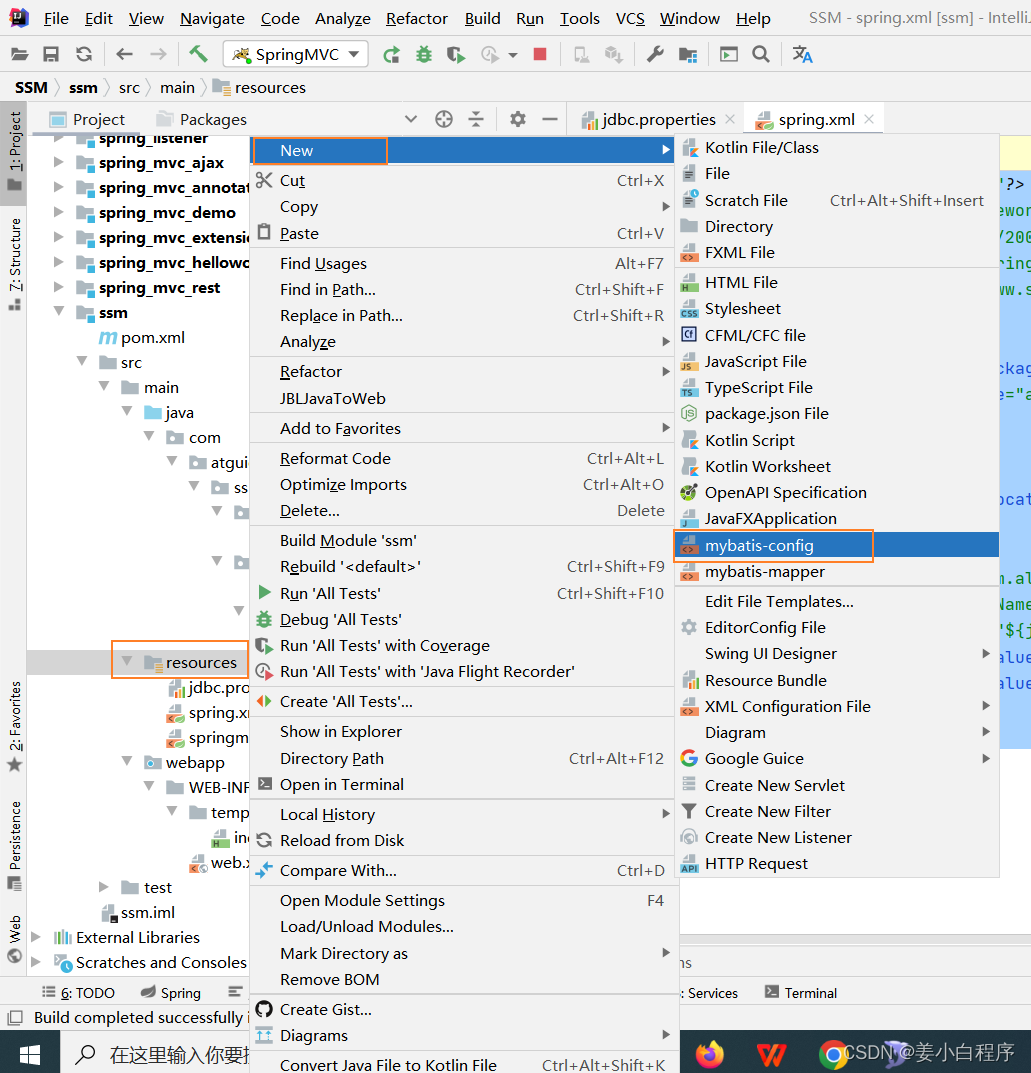
<?xml version="1.0" encoding="UTF-8" ?>
<!DOCTYPE configuration
PUBLIC "-//mybatis.org//DTD Config 3.0//EN"
"http://mybatis.org/dtd/mybatis-3-config.dtd">
<configuration>
<!--
MyBatis核心配置文件中的标签必须要按照指定的顺序配置:
properties?,settings?,typeAliases?,typeHandlers?,
objectFactory?,objectWrapperFactory?,reflectorFactory?,
plugins?,environments?,databaseIdProvider?,mappers?
-->
<!--引入properties文件,此后就可以在当前文件中使用的方式访问value-->
<properties resource="jdbc.properties"/>
<settings>
<!--将下划线映射为驼峰-->
<setting name="mapUnderscoreToCamelCase" value="true"/>
</settings>
<typeAliases>
<!--实体类 所在的包,通过包设置类型别名,指定包下所有的类型将全部拥有默认的别名,即类名且不区分大小写-->
<package name=""/>
</typeAliases>
<environments default="development">
<environment id="development">
<transactionManager type="JDBC"/>
<dataSource type="POOLED">
<property name="driver" value="${jdbc.driver}"/>
<property name="url" value="${jdbc.url}"/>
<property name="username" value="${jdbc.username}"/>
<property name="password" value="${jdbc.password}"/>
</dataSource>
</environment>
</environments>
<!--引入mybatis的映射文件-->
<mappers>
<package name=""/>
</mappers>
</configuration>2 mapper的接口 EmployeeMapper
package com.atguigu.ssm.mapper;
public interface EmployeeMapper {
}
3 mapper的接口所对应的映射文件
<?xml version="1.0" encoding="UTF-8" ?>
<!DOCTYPE mapper
PUBLIC "-//mybatis.org//DTD Mapper 3.0//EN"
"http://mybatis.org/dtd/mybatis-3-mapper.dtd">
<mapper namespace="com.atguigu.ssm.mapper.EmployeeMapper">
</mapper>4 .spring.xml
普通工厂和工厂bean的区别
普通工厂:如果是一个普通的工厂 然后我们把工厂配置到IOC容器中 要先获取IOC 在获取工厂的bean 然后在通过工厂获得工厂所提供的对象
工厂bean: 可以省略一个获取工厂的步骤 我们可以直接获取工厂所提供的对象
所以我们当前把SqlSessionFactoryBean配置到IOC容器中之后 就可从IOC容器直接获取到SqlSessionFactory对象
<!--配置SqlSessionFactoryBean,可以直接在Spring的IOC中获取SqlSessionFactory-->
<bean class="org.mybatis.spring.SqlSessionFactoryBean">
<!--设置MyBatis的核心配置文件的路径-->
<property name="configLocation" value="classpath:mybatis-config.xml"></property>
<!--设置数据源-->
<property name="dataSource" ref="dataSource"></property>
<!--设置类型别名所对应的包-->
<property name="typeAliasesPackage" value="com.atguigu.ssm.pojo"></property>
<!--设置映射文件的路径,只有映射文件的包和mapper接口的包不一致时需要设置-->
<!--<property name="mapperLocations" value="classpath:mappers/*.xml"></property>-->
</bean>配置好SqlSessionFactoryBean后 就可以直接装配sqlSessionFactory对象

删除mybatis-config.xml里面的数据源和引入实体所在的包 最后变成如下
<?xml version="1.0" encoding="UTF-8" ?>
<!DOCTYPE configuration
PUBLIC "-//mybatis.org//DTD Config 3.0//EN"
"http://mybatis.org/dtd/mybatis-3-config.dtd">
<configuration>
<!--
MyBatis核心配置文件中的标签必须要按照指定的顺序配置:
properties?,settings?,typeAliases?,typeHandlers?,
objectFactory?,objectWrapperFactory?,reflectorFactory?,
plugins?,environments?,databaseIdProvider?,mappers?
-->
<settings>
<!--将下划线映射为驼峰-->
<setting name="mapUnderscoreToCamelCase" value="true"/>
</settings>
<plugins>
<!--配置分页插件-->
<plugin interceptor="com.github.pagehelper.PageInterceptor"></plugin>
</plugins>
</configuration>5. 创建实体类pojo
package com.atguigu.ssm.pojo;
public class Employee {
private Integer empId;
private String empName;
private Integer age;
private String gender;
private String email;
public Employee() {
}
public Employee(Integer empId, String empName, Integer age, String gender, String email) {
this.empId = empId;
this.empName = empName;
this.age = age;
this.gender = gender;
this.email = email;
}
public Integer getEmpId() {
return empId;
}
public void setEmpId(Integer empId) {
this.empId = empId;
}
public String getEmpName() {
return empName;
}
public void setEmpName(String empName) {
this.empName = empName;
}
public Integer getAge() {
return age;
}
public void setAge(Integer age) {
this.age = age;
}
public String getGender() {
return gender;
}
public void setGender(String gender) {
this.gender = gender;
}
public String getEmail() {
return email;
}
public void setEmail(String email) {
this.email = email;
}
@Override
public String toString() {
return "Employee{" +
"empId=" + empId +
", empName='" + empName + '\'' +
", age=" + age +
", gender='" + gender + '\'' +
", email='" + email + '\'' +
'}';
}
}
6 . spring.xml
<?xml version="1.0" encoding="UTF-8"?>
<beans xmlns="http://www.springframework.org/schema/beans"
xmlns:xsi="http://www.w3.org/2001/XMLSchema-instance"
xmlns:context="http://www.springframework.org/schema/context" xmlns:tx="http://www.springframework.org/schema/tx"
xsi:schemaLocation="http://www.springframework.org/schema/beans http://www.springframework.org/schema/beans/spring-beans.xsd http://www.springframework.org/schema/context https://www.springframework.org/schema/context/spring-context.xsd http://www.springframework.org/schema/tx http://www.springframework.org/schema/tx/spring-tx.xsd">
<!--扫描组件(除控制层)-->
<context:component-scan base-package="com.atguigu.ssm">
<context:exclude-filter type="annotation" expression="org.springframework.stereotype.Controller"/>
</context:component-scan>
<!--引入jdbc.properties-->
<context:property-placeholder location="classpath:jdbc.properties"></context:property-placeholder>
<!--配置数据源-->
<bean id="dataSource" class="com.alibaba.druid.pool.DruidDataSource">
<property name="driverClassName" value="${jdbc.driver}"></property>
<property name="url" value="${jdbc.url}"></property>
<property name="username" value="${jdbc.username}"></property>
<property name="password" value="${jdbc.password}"></property>
</bean>
<!--配置事务管理器-->
<bean id="transactionManager" class="org.springframework.jdbc.datasource.DataSourceTransactionManager">
<property name="dataSource" ref="dataSource"></property>
</bean>
<!--
开启事务的注解驱动
将使用注解@Transactional标识的方法或类中所有的方法进行事务管理
-->
<tx:annotation-driven transaction-manager="transactionManager" />
<!--配置SqlSessionFactoryBean,可以直接在Spring的IOC中获取SqlSessionFactory-->
<bean class="org.mybatis.spring.SqlSessionFactoryBean">
<!--设置MyBatis的核心配置文件的路径-->
<property name="configLocation" value="classpath:mybatis-config.xml"></property>
<!--设置数据源-->
<property name="dataSource" ref="dataSource"></property>
<!--设置类型别名所对应的包-->
<property name="typeAliasesPackage" value="com.atguigu.ssm.pojo"></property>
<!--设置映射文件的路径,只有映射文件的包和mapper接口的包不一致时需要设置-->
<!--<property name="mapperLocations" value="classpath:mappers/*.xml"></property>-->
</bean>
<!--
配置mapper接口的扫描,可以将指定包下所有的mapper接口
通过SqlSession创建代理实现类对象,并将这些对象交给IOC容器管理
-->
<bean class="org.mybatis.spring.mapper.MapperScannerConfigurer">
<property name="basePackage" value="com.atguigu.ssm.mapper"></property>
</bean>
</beans><?xml version="1.0" encoding="UTF-8" ?>
<!DOCTYPE log4j:configuration SYSTEM "log4j.dtd">
<log4j:configuration xmlns:log4j="http://jakarta.apache.org/log4j/">
<appender name="STDOUT" class="org.apache.log4j.ConsoleAppender">
<param name="Encoding" value="UTF-8" />
<layout class="org.apache.log4j.PatternLayout">
<param name="ConversionPattern" value="%-5p %d{MM-dd HH:mm:ss,SSS} %m (%F:%L) \n" />
</layout>
</appender>
<logger name="java.sql">
<level value="debug" />
</logger>
<logger name="org.apache.ibatis">
<level value="info" />
</logger>
<root>
<level value="debug" />
<appender-ref ref="STDOUT" />
</root>
</log4j:configuration>十 一 SSM整合之员工列表功能
1 书写控制层EmployeeController
查询完信息要把它展示在页面上 所以我们要把它共享到域对象中
package com.atguigu.ssm.controller;
import com.atguigu.ssm.pojo.Employee;
import com.atguigu.ssm.service.EmployeeService;
import org.springframework.beans.factory.annotation.Autowired;
import org.springframework.stereotype.Controller;
import org.springframework.ui.Model;
import org.springframework.web.bind.annotation.RequestMapping;
import org.springframework.web.bind.annotation.RequestMethod;
import java.util.List;
/**
* Date:2022/7/11
* Author:ybc
* Description:
* 查询所有的员工信息-->/employee-->get
* 查询员工的分页信息-->/employee/page/1-->get
* 根据id查询员工信息-->/employee/1-->get
* 跳转到添加页面-->/to/add-->get
* 添加员工信息-->/employee-->post
* 修改员工信息-->/employee-->put
* 删除员工信息-->/employee/1-->delete
*/
@Controller
public class EmployeeController {
@Autowired
private EmployeeService employeeService;
@RequestMapping(value = "/employee", method = RequestMethod.GET)
public String getAllEmployee(Model model){
//查询所有的员工信息
List<Employee> list = employeeService.getAllEmployee();
//将员工信息在请求域中共享
model.addAttribute("list", list);
//跳转到employee_list.html
return "employee_list";
}
}
2 在接口里面写方法
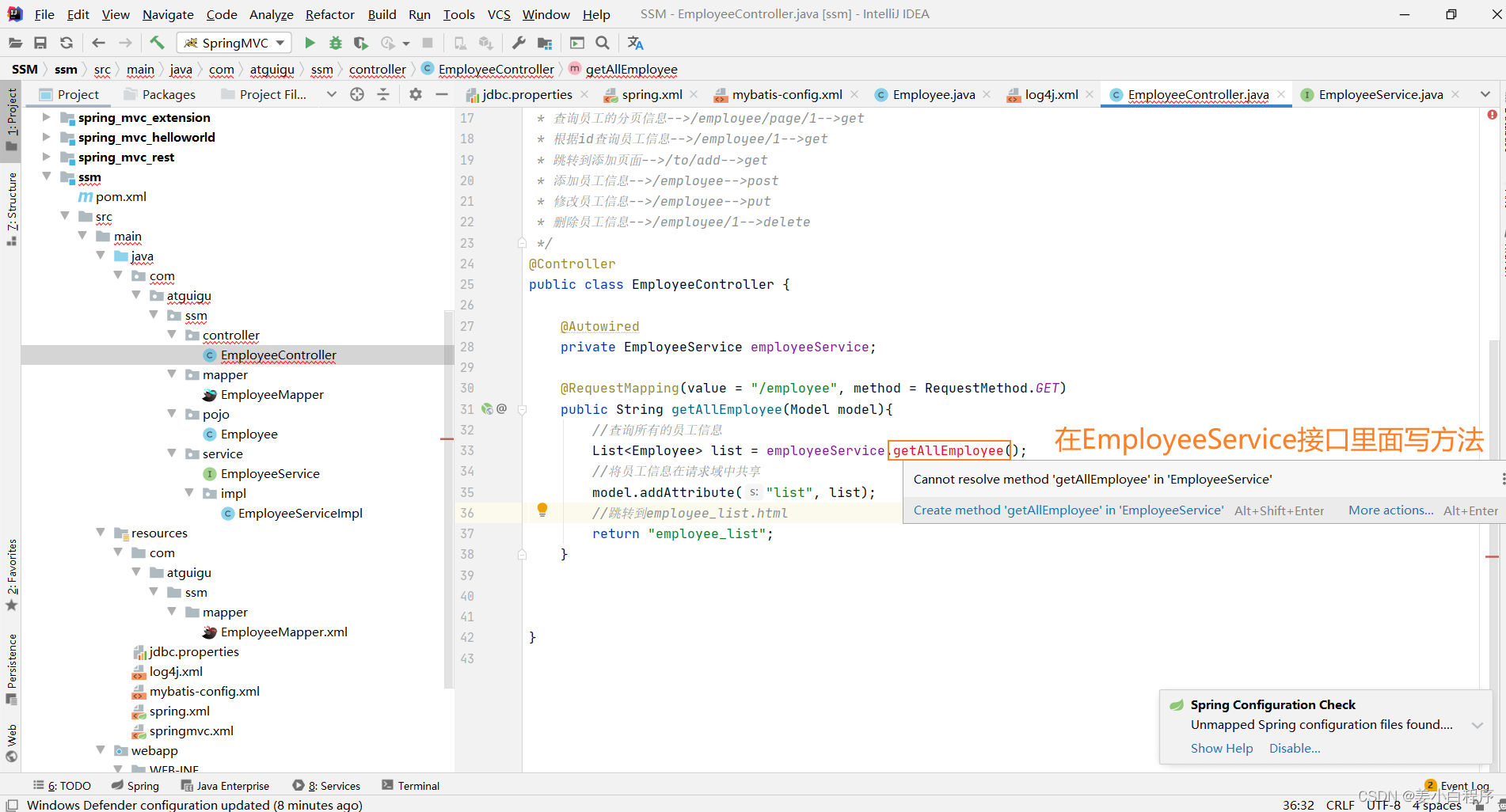
package com.atguigu.ssm.service;
import com.atguigu.ssm.pojo.Employee;
import java.util.List;
public interface EmployeeService {
/**
* 查询所有的员工信息
* @return
*/
List<Employee> getAllEmployee();
}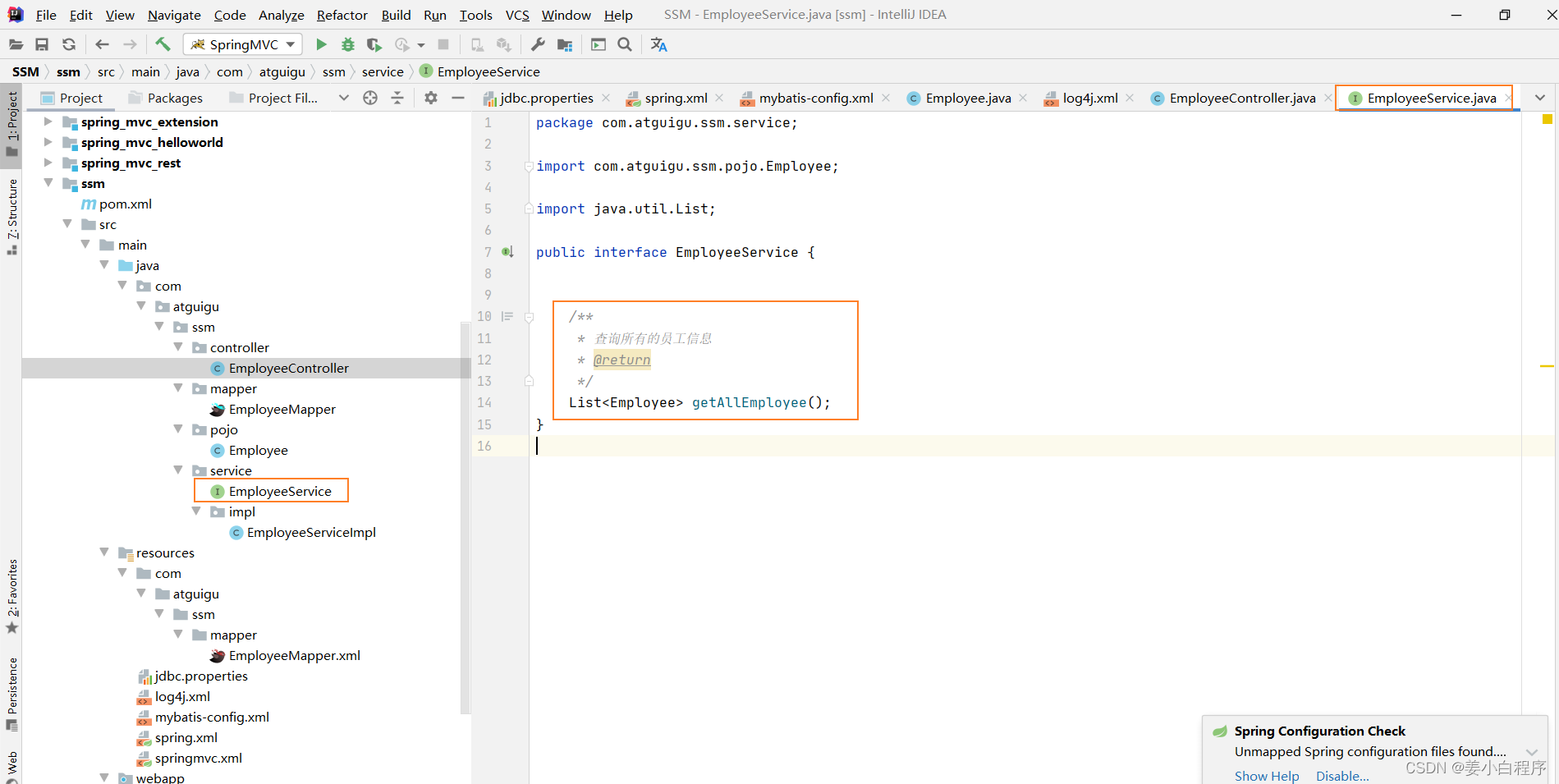
3 写实现类

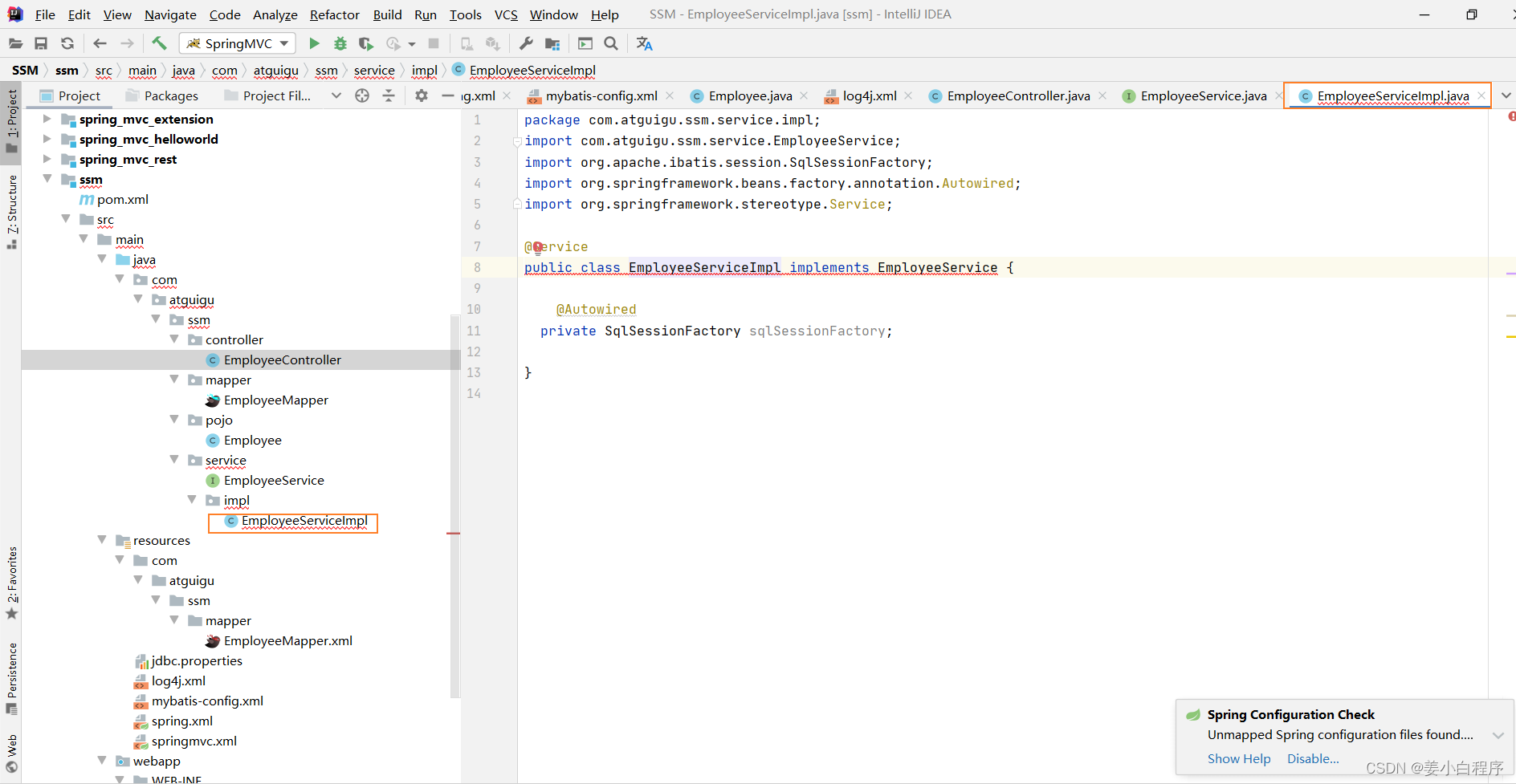
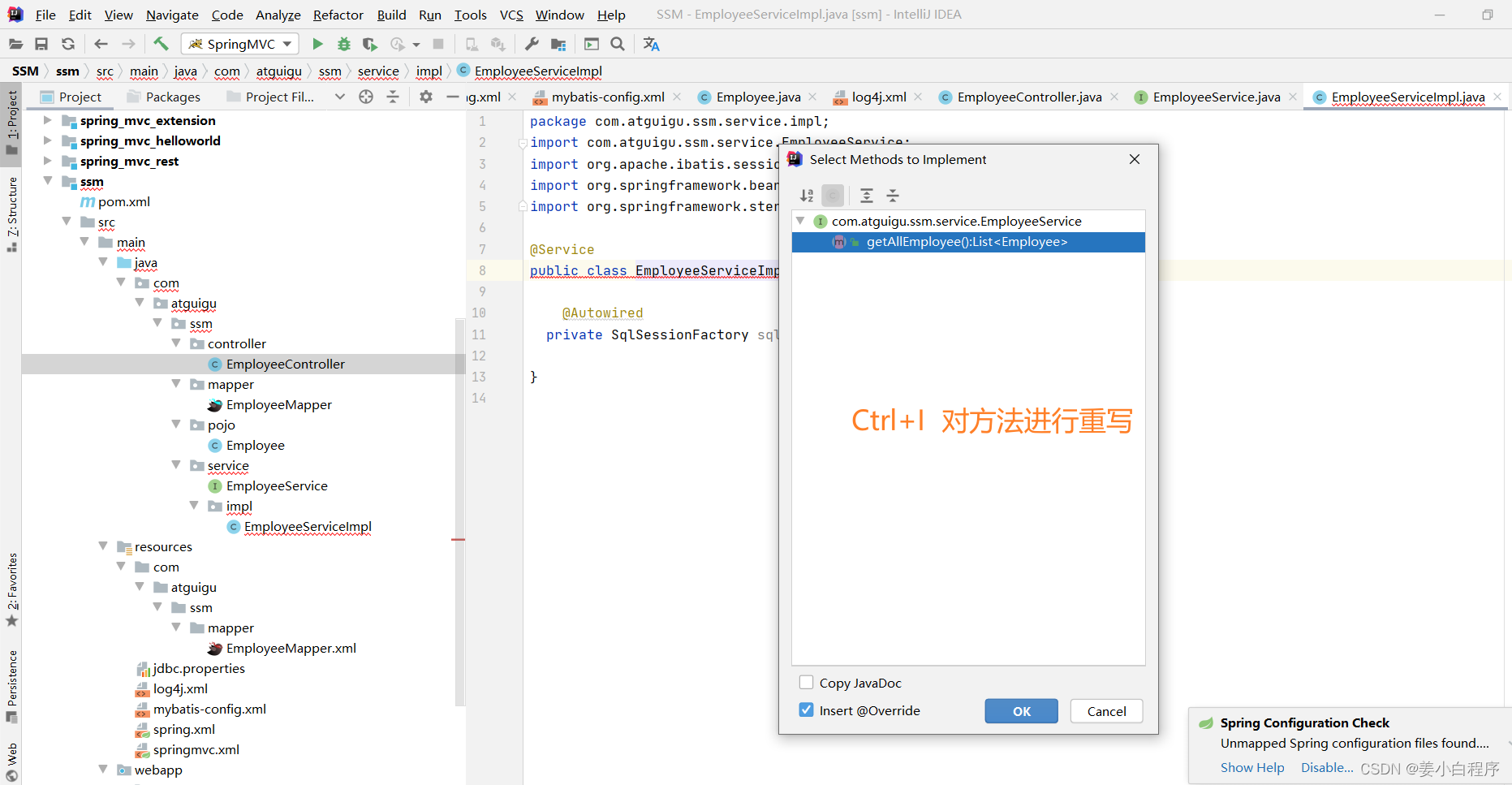
package com.atguigu.ssm.service.impl;
@Service
public class EmployeeServiceImpl implements EmployeeService {
@Autowired
private EmployeeMapper employeeMapper;
@Override
public List<Employee> getAllEmployee() {
return employeeMapper.getAllEmployee();
}
} 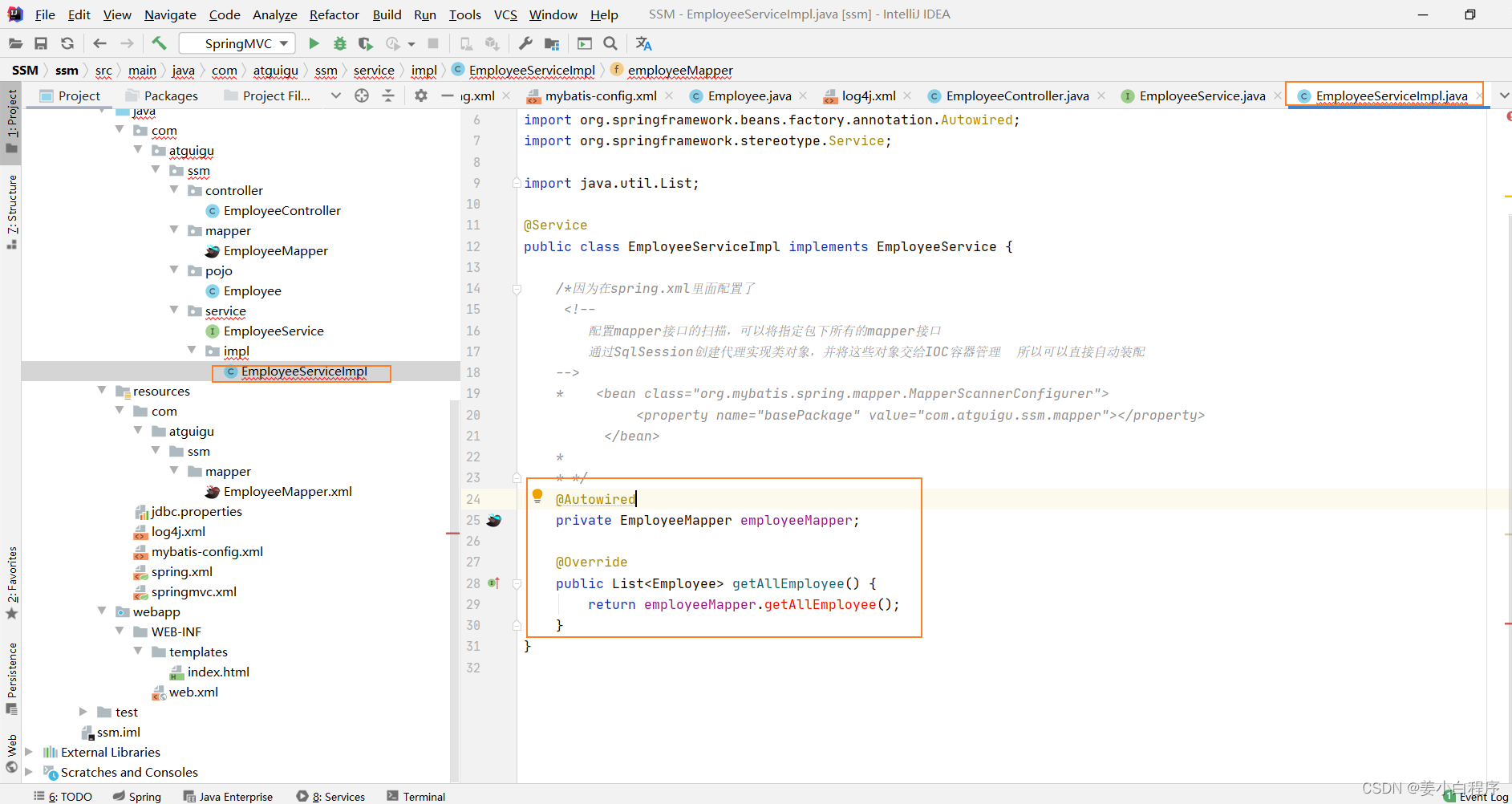
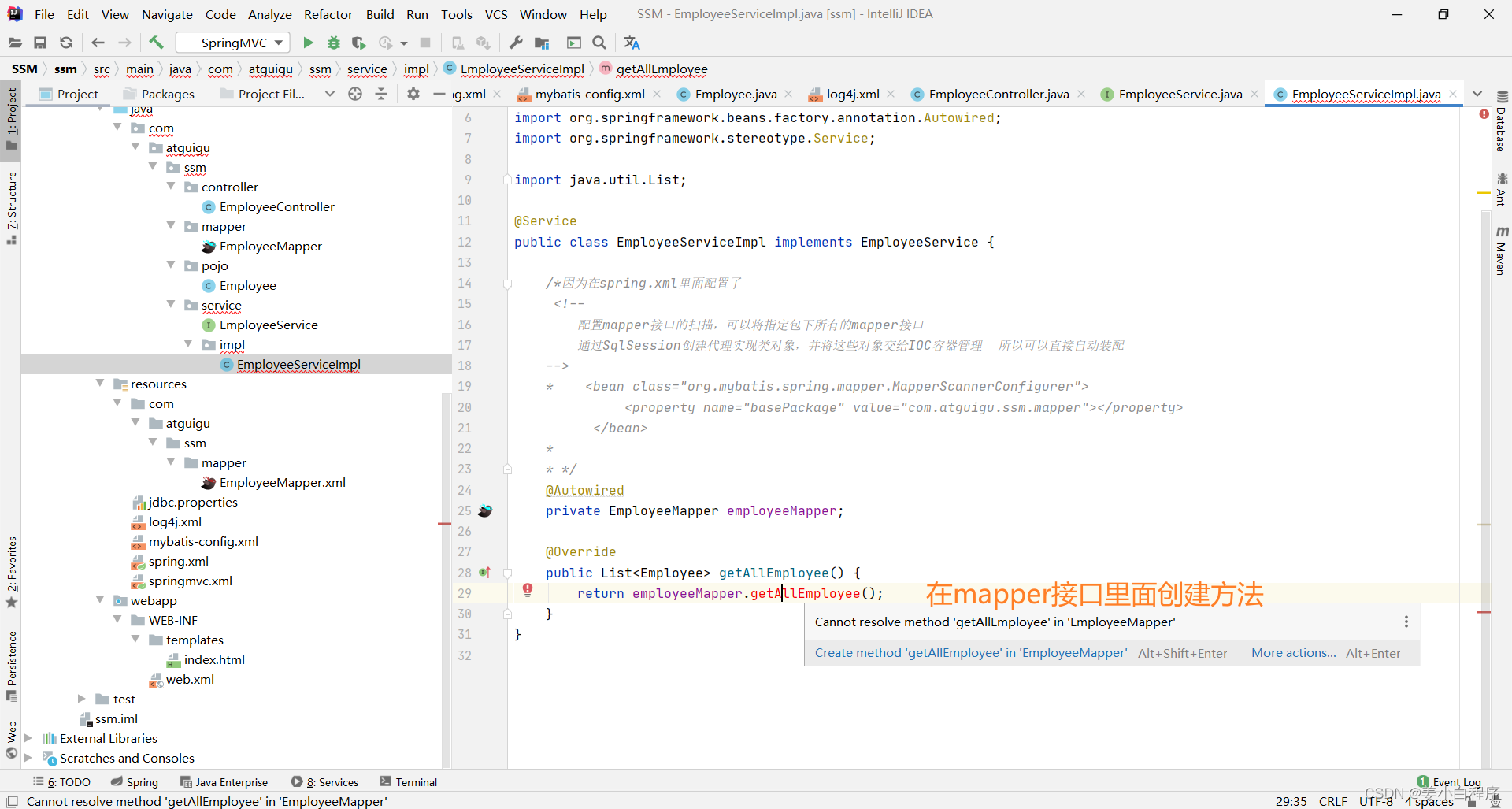
3 在mapper接口里面创建方法 查询所有员工的方法
package com.atguigu.ssm.mapper;
import com.atguigu.ssm.pojo.Employee;
import java.util.List;
public interface EmployeeMapper {
/**
* 查询所有的员工信息
* @return
*/
List<Employee> getAllEmployee();
}

这里面不用写实现类 因为是mapper 主需要根据mapper接口的方法在所对应的映射文件创建他的sql语句就可以
4 . 根据mapper接口的方法在所对应的映射文件EmployeeMapper.xml里面创建他的sql语句
<?xml version="1.0" encoding="UTF-8" ?>
<!DOCTYPE mapper
PUBLIC "-//mybatis.org//DTD Mapper 3.0//EN"
"http://mybatis.org/dtd/mybatis-3-mapper.dtd">
<mapper namespace="com.atguigu.ssm.mapper.EmployeeMapper">
<!--List<Employee> getAllEmployee();-->
<select id="getAllEmployee" resultType="Employee">
select * from t_emp
</select>
</mapper>5. 创建employee_list.html
<!DOCTYPE html>
<html lang="en" xmlns:th="http://www.thymeleaf.org">
<head>
<meta charset="UTF-8">
<title>员工列表</title>
<link rel="stylesheet" th:href="@{/static/css/index_work.css}">
</head>
<body>
<table>
<tr>
<th colspan="6">员工列表</th>
</tr>
<tr>
<th>流水号</th>
<th>员工姓名</th>
<th>年龄</th>
<th>性别</th>
<th>邮箱</th>
<th>操作</th>
</tr>
<tr th:each="employee,status : ${list}">
<td th:text="${status.count}"></td>
<td th:text="${employee.empName}"></td>
<td th:text="${employee.age}"></td>
<td th:text="${employee.gender}"></td>
<td th:text="${employee.email}"></td>
<td>
<a href="">删除</a>
<a href="">修改</a>
</td>
</tr>
</table>
</body>
</html>6 .index.html
<!DOCTYPE html>
<html lang="en" xmlns:th="http://www.thymeleaf.org">
<head>
<meta charset="UTF-8">
<title>首页</title>
</head>
<body>
<h1>index.html</h1>
<a th:href="@{/employee}">查询员工的分页信息</a>
</body>
</html>7 .测试
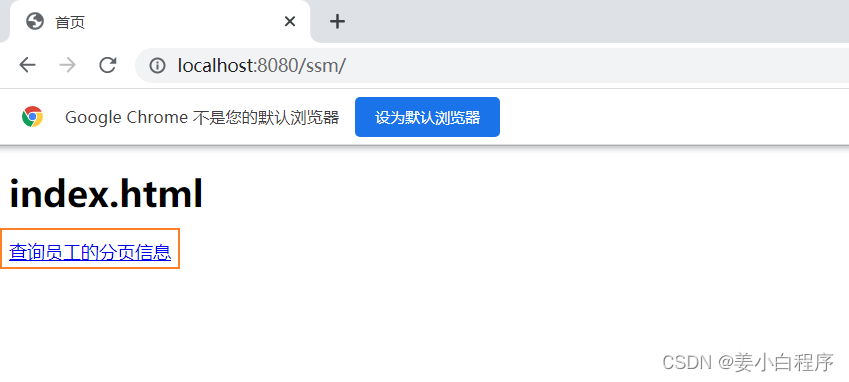
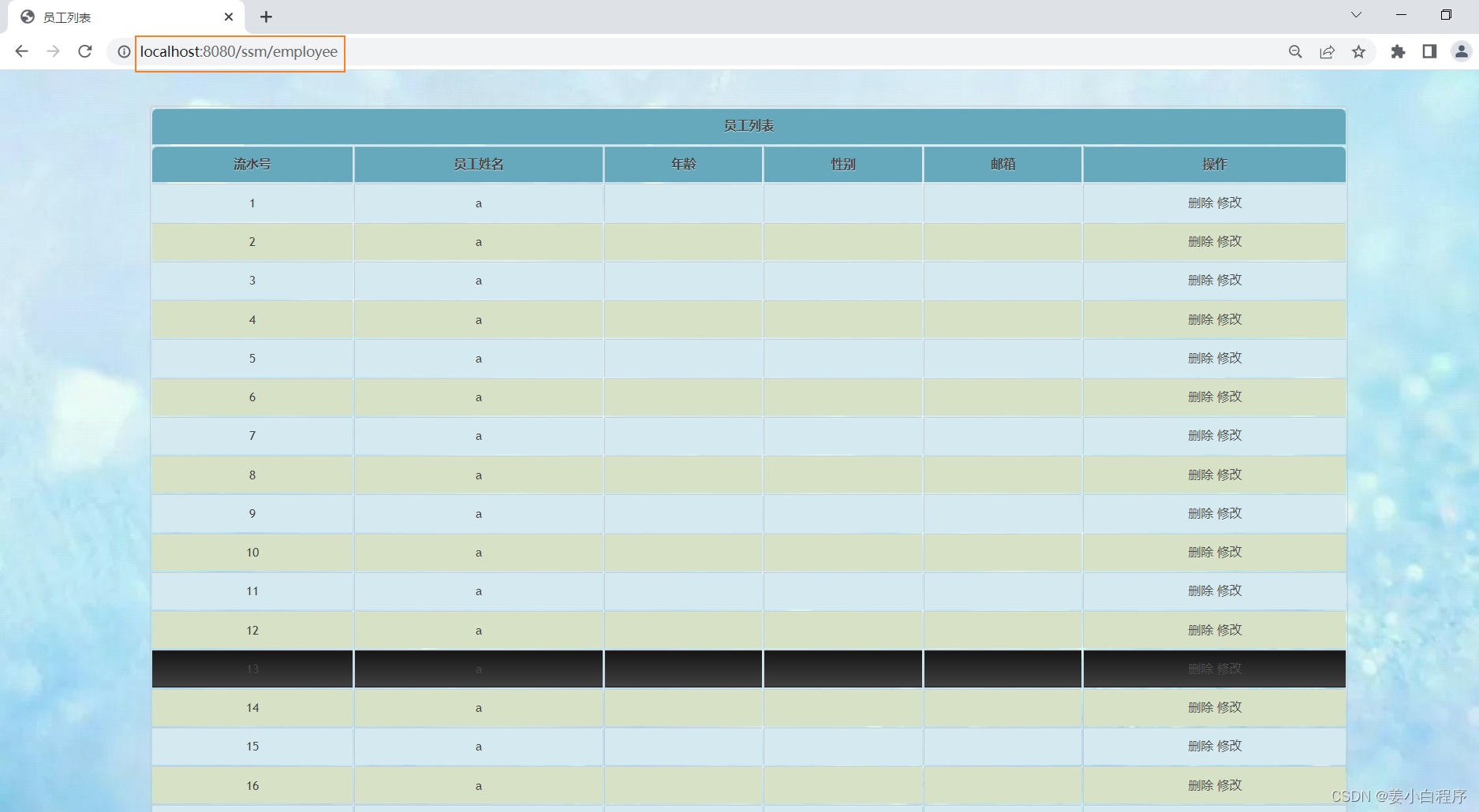
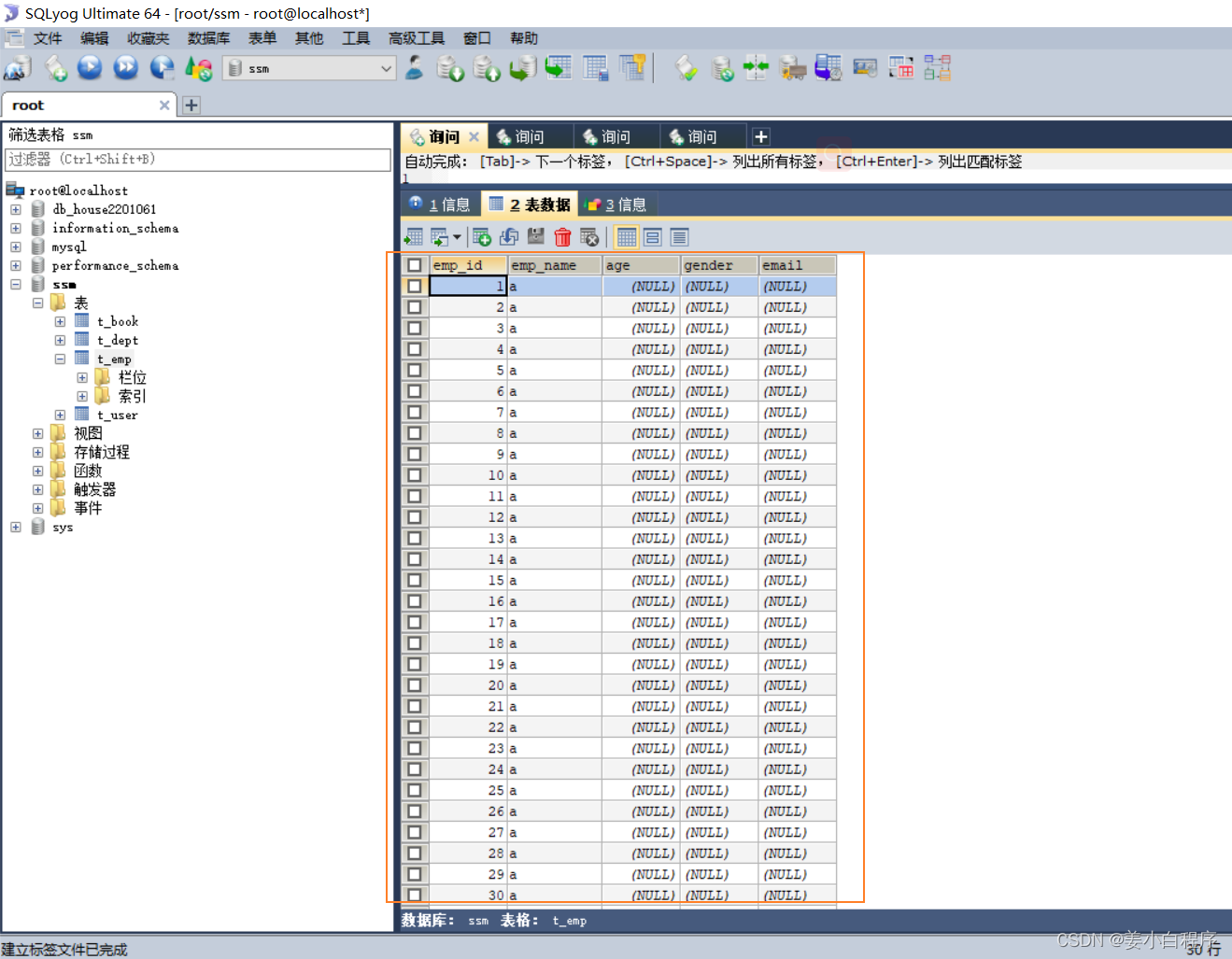
十二 SSM整合之展示数据
1 写控制层
@RequestMapping(value = "/employee/page/{pageNum}", method = RequestMethod.GET)
public String getEmployeePage(@PathVariable("pageNum") Integer pageNum, Model model){
//获取员工的分页信息
PageInfo<Employee> page = employeeService.getEmployeePage(pageNum);
//将分页数据共享到请求域中
model.addAttribute("page", page);
//跳转到employee_list.html
return "employee_list";
}2 . 写接口 方法 获取员工的信息
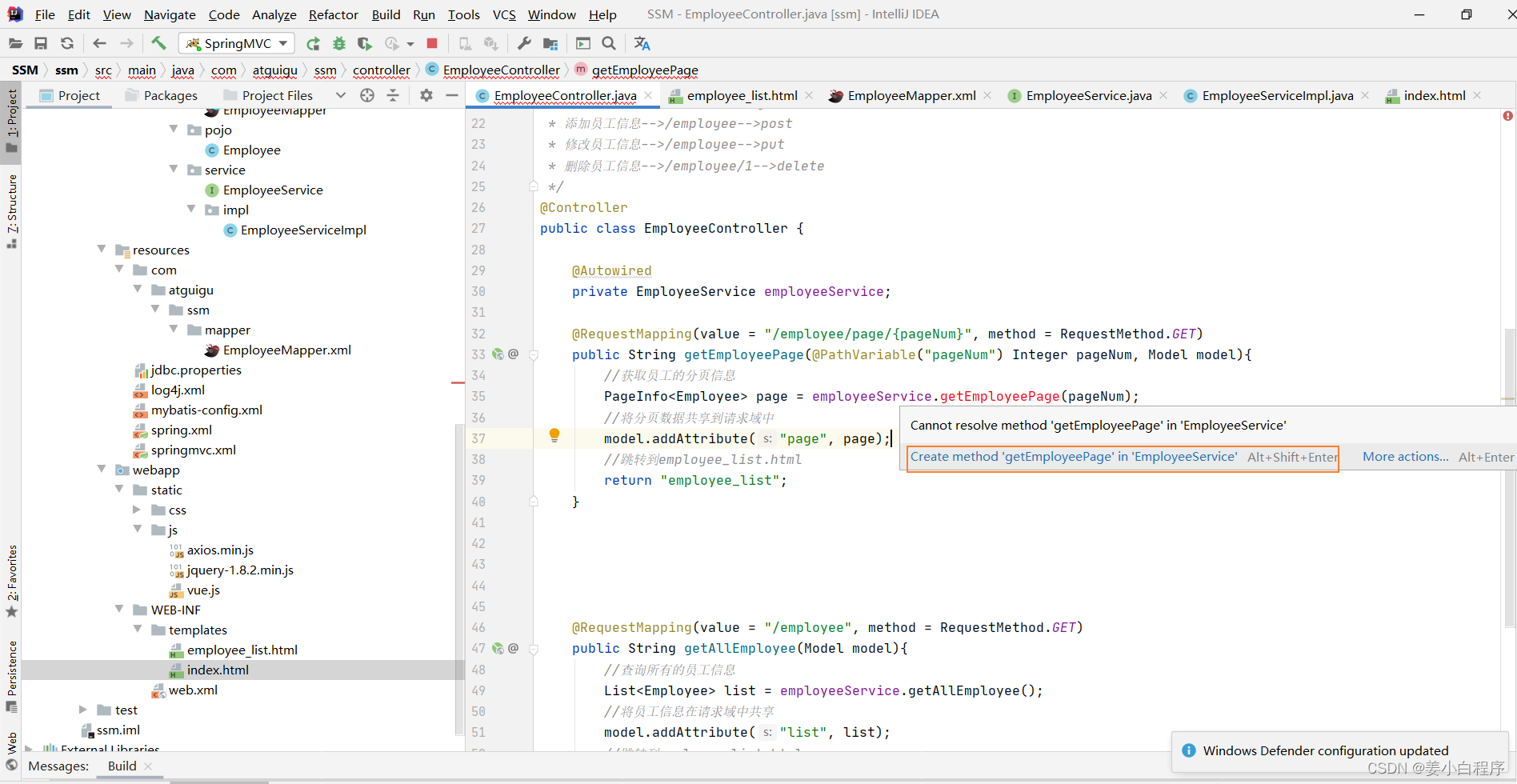
/**
* 获取员工的分页信息
* @param pageNum
* @return
*/
PageInfo<Employee> getEmployeePage(Integer pageNum);3 实现类
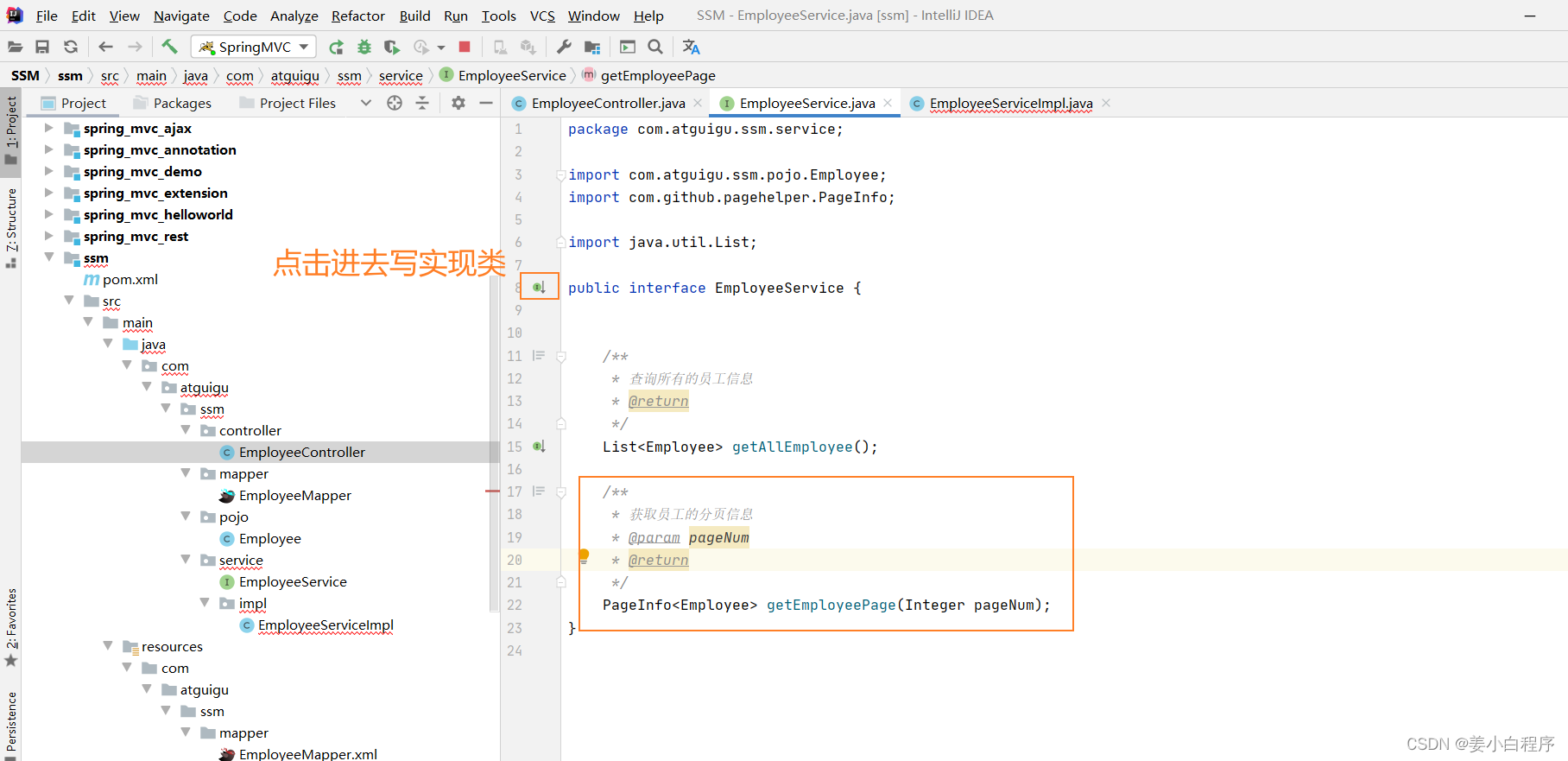
@Override
public PageInfo<Employee> getEmployeePage(Integer pageNum) {
//开启分页功能
PageHelper.startPage(pageNum, 4);
//查询所有的员工信息
List<Employee> list = employeeMapper.getAllEmployee();
//获取分页相关数据
PageInfo<Employee> page = new PageInfo<>(list, 5);
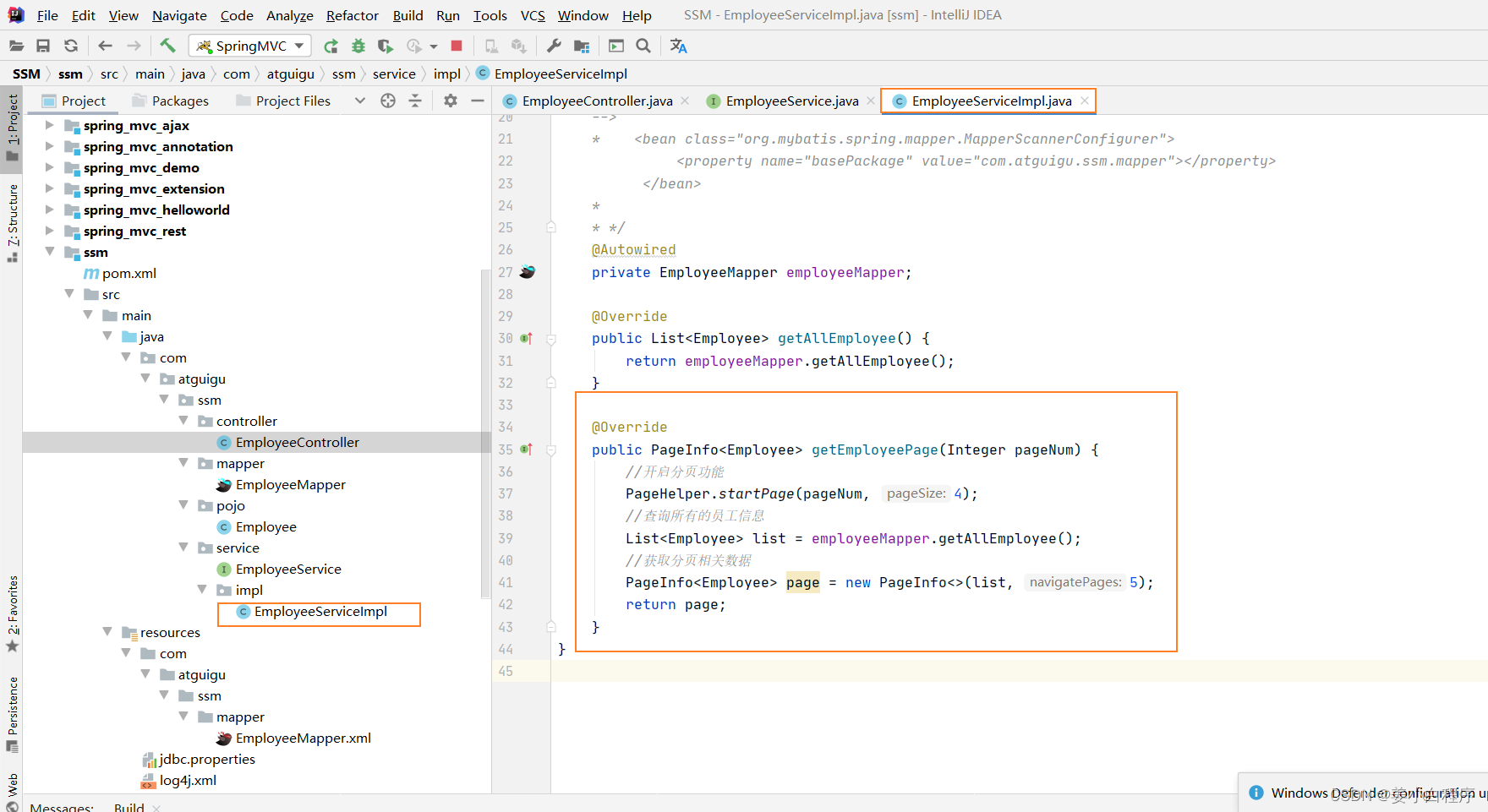
4 index.html
<!DOCTYPE html>
<html lang="en" xmlns:th="http://www.thymeleaf.org">
<head>
<meta charset="UTF-8">
<title>首页</title>
</head>
<body>
<h1>index.html</h1>
<!--<a th:href="@{/employee}">查询员工的分页信息</a>-->
<a th:href="@{/employee/page/1}">查询员工的分页信息</a>
</body>
</html>
5 employee_list.html
<!DOCTYPE html>
<html lang="en" xmlns:th="http://www.thymeleaf.org">
<head>
<meta charset="UTF-8">
<title>员工列表</title>
<link rel="stylesheet" th:href="@{/static/css/index_work.css}">
</head>
<body>
<table>
<tr>
<th colspan="6">员工列表</th>
</tr>
<tr>
<th>流水号</th>
<th>员工姓名</th>
<th>年龄</th>
<th>性别</th>
<th>邮箱</th>
<th>操作</th>
</tr>
<tr th:each="employee,status : ${page.list}">
<td th:text="${status.count}"></td>
<td th:text="${employee.empName}"></td>
<td th:text="${employee.age}"></td>
<td th:text="${employee.gender}"></td>
<td th:text="${employee.email}"></td>
<td>
<a href="">删除</a>
<a href="">修改</a>
</td>
</tr>
</table>
</body>
</html>6 测试
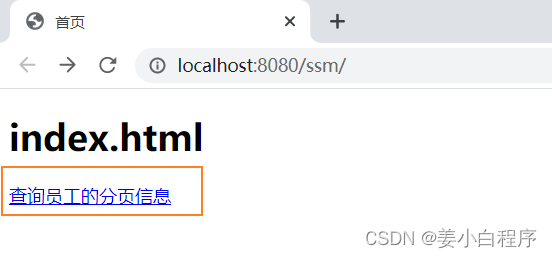


十三 SSM整合设置分页相关超链接
1. employee_list.html
<!DOCTYPE html>
<html lang="en" xmlns:th="http://www.thymeleaf.org">
<head>
<meta charset="UTF-8">
<title>员工列表</title>
<link rel="stylesheet" th:href="@{/static/css/index_work.css}">
</head>
<body>
<table>
<tr>
<th colspan="6">员工列表</th>
</tr>
<tr>
<th>流水号</th>
<th>员工姓名</th>
<th>年龄</th>
<th>性别</th>
<th>邮箱</th>
<th>操作</th>
</tr>
<tr th:each="employee,status : ${page.list}">
<td th:text="${status.count}"></td>
<td th:text="${employee.empName}"></td>
<td th:text="${employee.age}"></td>
<td th:text="${employee.gender}"></td>
<td th:text="${employee.email}"></td>
<td>
<a href="">删除</a>
<a href="">修改</a>
</td>
</tr>
</table>
<div style="text-align: center;">
<a th:if="${page.hasPreviousPage}" th:href="@{/employee/page/1}">首页</a>
<a th:if="${page.hasPreviousPage}" th:href="@{'/employee/page/'+${page.prePage}}">上一页</a>
<span th:each="num : ${page.navigatepageNums}">
<a th:if="${page.pageNum == num}" style="color: red;" th:href="@{'/employee/page/'+${num}}" th:text="'['+${num}+']'"></a>
<a th:if="${page.pageNum != num}" th:href="@{'/employee/page/'+${num}}" th:text="${num}"></a>
</span>
<a th:if="${page.hasNextPage}" th:href="@{'/employee/page/'+${page.nextPage}}">下一页</a>
<a th:if="${page.hasNextPage}" th:href="@{'/employee/page/'+${page.pages}}">末页</a>
</div>
</body>
</html>2 .测试

3 回顾 分页插件
limit index,pageSize
pageSize:每页显示的条数
pageNum:当前页的页码
index:当前页的起始索引,index=(pageNum-1)*pageSize
count:总记录数
totalPage:总页数
totalPage = count / pageSize;
if(count % pageSize != 0){
totalPage += 1; }
pageSize=4,pageNum=1,index=0 limit 0,4
pageSize=4,pageNum=3,index=8 limit 8,4
pageSize=4,pageNum=6,index=20 limit 8,4
首页 上一页 2 3 4 5 6 下一页 末页

